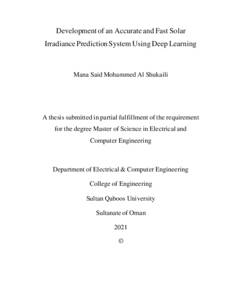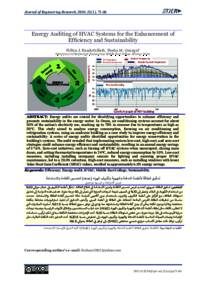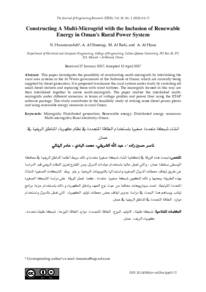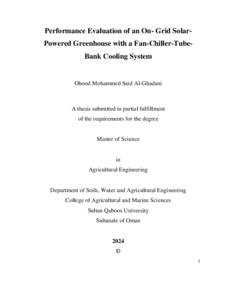وثيقة
Development of an accurate and fast solar irradiance prediction system using deep learning.
الناشر
Sultan Qaboos University.
ميلادي
2021
اللغة
الأنجليزية
الملخص الإنجليزي
The worldwide generation of solar energy has grown at an unprecedented rate over the
last decade. However, several challenges are still associated with solar energy. One of
which is the unreliability of this renewable energy source due to the imperfect prediction
of weather conditions. As such, accurate solar irradiance predictors are necessary to
improve the reliability of solar energy. Such an accurate predictor can be embedded into
an energy management system for renewable power generation to perform early
prediction of Solar irradiance. This helps during power generation planning and
supporting cost reduction strategies in the energy industry.
This thesis proposes an accurate and fast solar irradiance predictor using a data-driven
deep learning model. The model is based on the Long Short-Term Memory (LSTM)
architecture. The model was developed using a complex machine learning algorithm
with three inputs (i.e., Wind Sustained Speed, Temperature Dry, and Solar irradiance)
and one output (Solar irradiance). The model was trained and tested using actual weather
measurements from the Thumrait area, Sultanate of Oman. Furthermore, an additional
dataset from Marmul was used to explore if the proposed model can be used to predict
irradiance at locations other than Thumrait.
The simulation results show that the proposed model outperforms the ARIMA model in
terms of prediction accuracy, where the former scored RMSE of 24 W/m2
compared to
279 W/m2
scored by the latter. Additionally, the proposed model runs faster compared
to other contending models found in the literature. More specifically, the model can
predict the solar irradiance of one year in only 23 seconds. Overall, the results show that
the proposed model is more effective in dealing with time-series datasets.
المجموعة
URL المصدر
الملخص العربي
لقد نما توليد الطاقة الشمسية في جميع أنحاء العالم بمعدلات غير مسبوقة خلال العقد الماضي. ومع ذلك، فإن هناك العديد من التحديات إلنتاج الطاقة باستخدام الإشعاع الشمسي، أحدها عدم موثوقية مصدر الطاقة المتجددة وذلك بسبب التنبؤ الغير دقيق بالظروف الجوية. ومن هذا المنطلق فإنه من الضروري توافر تنبؤات دقيقة للإشعاع الشمسي لتحسين موثوقية الطاقة الشمسية المنتجة. يمكن تضمين مثل هذا المتنبئ الدقيق في نظام إدارة الطاقة المتجددة من أجل التنبؤ المبكر لإلشعاع الشمسي للمساعدة أثناء التخطيط لتوليد الطاقة باستخدام الإشعاع الشمسي ودعم استراتيجيات خفض التكاليف في قطاع انتاج الطاقة. متنبئا دقيقًا وسريعًا لإلشعاع الشمسي باستخدام نموذج التعلم العميق المستند إلى البيانات. تم ً تقترح هذه الإطروحة تصميم النموذج بناءً على بنية الذاكرة طويلة المدى )LSTM). تم تطوير النموذج باستخدام خوارزمية التعلم الآلي المعقدة مع ثلاثة مدخلات )سرعة الرياح، ودرجة الحرارة الجافة، والإشعاع الشمسي( ومخرج واحد )الإشعاع الشمسي(. تم تدريب النموذج واختباره باستخدام بيانات الطقس الفعلية من منطقة ثمريت بسلطنة عمان. تظهر نتائج التجارب أن النموذج المقترح يتفوق على نموذج ARIMA من حيث دقة التنبؤ، حيث سجل الإول 2 RMSE قدره 24 وات/م مقارنة بـ 279 وات/م 2 والذي سجله النموذج الثاني. بالإضافة إلى ذلك، يعمل النموذج المقترح بشكل أسرع مقارنة بالنماذج المنافسة الإخرى الموجودة في الإوراق البحثية المنشورة. وبشكل أكثر تحديدًا، يمكن للنموذج أن يتنبأ بالإشعاع الشمسي لسنة واحدة مقبلة في 23 ثانية فقط. بشكل عام، تُظهر النتائج أن النموذج المقترح أكثر فعالية في التعامل مع مجموعات بيانات السلاسل الزمنية
قالب العنصر
الرسائل والأطروحات الجامعية




